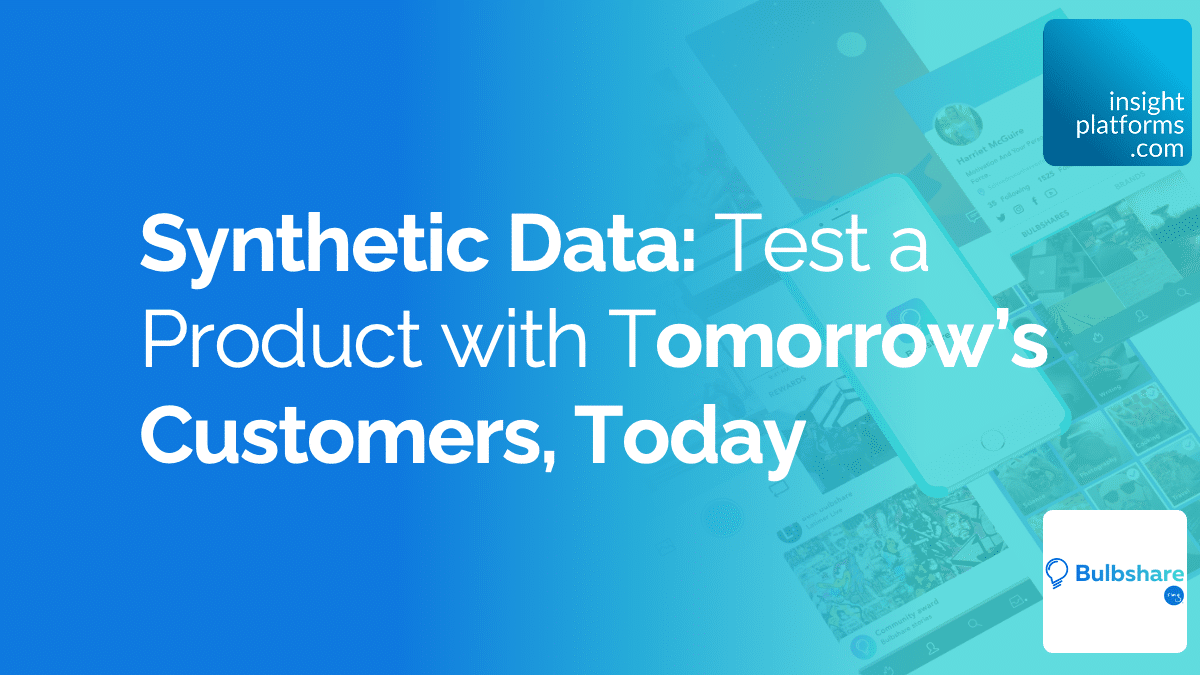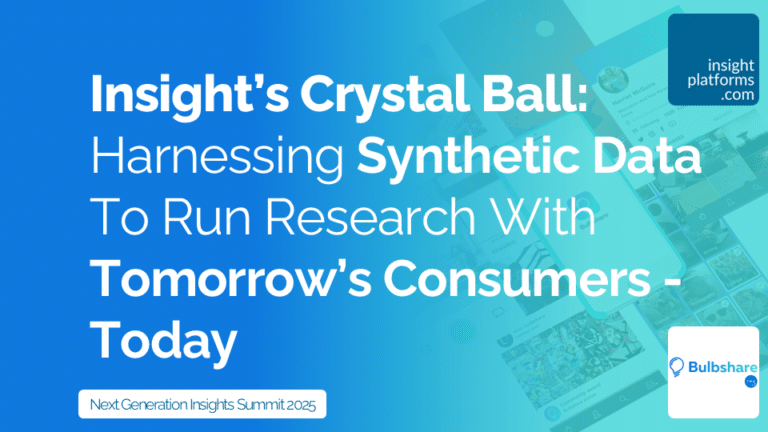
Synthetic Data: Test a Product with Tomorrow’s Customers Today
By Bulbshare
- article
- Synthetic Respondents
- AI
- Concept Testing
Testing new concepts has always involved an element of uncertainty, but what if you could predict consumer reactions before launching? Synthetic data is making this possible by leveraging AI-generated insights based on real-world behaviours, historical data, and smart prompting.
At a recent Next Generation Insights Summit presentation, experts Maud Hua-Bulteau, Consumer Insights Lead at Nestlé Purina, and Robbie Johnson, Client Collaborator at Bulbshare, explored how this technology is transforming market research.
Watch the webinar replay here:
Insight’s Crystal Ball: Harnessing Synthetic Data To Run Research With Tomorrow’s Consumers – Today
Understanding Synthetic Data
Synthetic data isn’t “fake” data – it is AI-generated information modelled on real trends, behaviours, and historical sources to predict possible outcomes or create digital twins based on specific personas. In other words, it’s grounded in real-world patterns and consumer behaviours, using AI to simulate responses based on specific personas entered into the model.
Key Benefits and Applications
The advantages of synthetic data in market research are significant:
- Speed and scale: results from a sample of 200+ responses can be generated in under 30 minutes, without recruitment or incentive costs.
- Confidential testing: enables testing of sensitive concepts or unreleased products without risk of information leaks.
- Scenario planning: allows brands to explore multiple future scenarios and prepare for different market conditions.
- Cost-effectiveness: eliminates traditional recruitment and incentive costs while delivering rapid results.
Implementation Challenges
While powerful, synthetic data comes with important considerations:
- Quality dependencies: the output quality directly depends on input quality, both in persona descriptions and question formulation.
- Nuance limitations: while AI can process vast amounts of data, it may miss subtle emotional nuances that human respondents provide.
- Ethical considerations: questions around data consent, bias prevention, and the environmental impact of AI usage need careful consideration.
Best Practices
Successful implementation of synthetic data research requires attention to three key areas. First, creating detailed inputs is crucial, which means developing comprehensive persona descriptions and framing questions explicitly and clearly. The quality of synthetic data outputs directly depends on how well we articulate our requirements, making ambiguity in prompts a particular challenge to avoid.
Quality control forms the second pillar of success. Human oversight remains essential throughout the process, with regular validation against real-world data and consistent checks for logical coherence in the results. This ensures that the synthetic data generated maintains its relevance and reliability.
Finally, synthetic data works best when viewed as part of a balanced research approach. It should complement traditional research methods rather than replace them entirely. Combining synthetic data with real-world insights provides the most comprehensive understanding, while regular validation of models and outputs ensures continued accuracy.
Looking Ahead
Synthetic data is transforming how organisations approach market research, offering capabilities that extend beyond traditional methodologies. While it won’t replace conventional research methods, its ability to deliver rapid insights, handle confidential concepts, and explore future scenarios makes it an invaluable tool for modern insight teams. As the technology continues to mature, synthetic data will play an increasingly important role in helping organisations make faster, more informed decisions.



